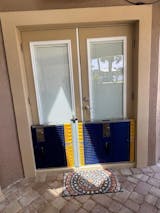Table of Contents
- Underinsuring Your Property
-
- Ignoring Local Flood Maps
- Not Reviewing Your Policy Regularly
- Assuming Your Homeowner’s Insurance Covers Flood Damage
- Failing to Understand Waiting Periods
- Overlooking Coverage for Personal Belongings
- Not Asking About Discounts
- Neglecting to Consult a Flood Insurance Specialist
- Final Thoughts
Floods can be a homeowner’s worst nightmare. With the potential for significant damage to your property and belongings, having the right flood insurance can make all the difference. However, many homeowners make mistakes that lead to higher costs or inadequate coverage. In this blog post, we’ll walk you through common pitfalls to avoid when purchasing insurance. By steering clear of these missteps, you can save money and ensure your home is properly protected.
Underinsuring Your Property
One of the biggest mistakes homeowners make is underinsuring their property. Many people think they can get away with a lower coverage limit to save on premiums. However, if disaster strikes, you may end up paying out of pocket for the difference.
Tip: When determining the amount of coverage you need, consider the total replacement cost of your home and possessions. Get a professional appraisal if necessary. Remember, flood insurance typically only covers the structure and some personal belongings, so ensure your coverage matches the true value of what you own.
Ignoring Local Flood Maps
Flood zones can change over time, and many homeowners are unaware of their property's flood risk. Local flood maps, provided by the Federal Emergency Management Agency (FEMA), help identify areas at risk for flooding. Ignoring these maps can lead to insufficient coverage or unexpected rate increases.
Tip: Check your local flood map at FEMA’s Flood Map Service Center to understand your flood zone and risk. If your property has recently been mapped into a higher-risk zone, your insurance requirements may change.
Not Reviewing Your Policy Regularly
Just because you have insurance doesn’t mean you’re automatically covered for every situation. Policies can change, and so can your needs. If you make home improvements or acquire valuable possessions, it’s crucial to review and update your policy accordingly.
Tip: Set a reminder to review your flood insurance policy annually. Discuss any changes in your home or property with your insurance agent to ensure your coverage remains adequate.
Assuming Your Homeowner’s Insurance Covers Flood Damage
Many homeowners mistakenly believe that their standard homeowner’s insurance policy covers flood damage. Unfortunately, most homeowner’s policies do not include flood coverage, leaving you vulnerable if a flood occurs.
Tip: Always ask your insurance agent about specific coverage for flooding. If your current policy does not cover floods, consider purchasing a separate insurance policy through the National Flood Insurance Program (NFIP) or a private insurer.
Failing to Understand Waiting Periods
Did you know that most flood insurance policies come with a waiting period? This means that after you purchase your policy, it won’t take effect immediately. Generally, there’s a 30-day waiting period before your coverage kicks in.
Tip: Plan ahead! If you live in a flood-prone area or if a storm is approaching, don’t wait until the last minute to get coverage. Purchase your insurance well in advance to ensure you’re protected when you need it.
Overlooking Coverage for Personal Belongings
While flood insurance is primarily focused on the structure of your home, it also covers personal belongings. However, there are limits to what is covered, and certain items may not be included. For instance, expensive art, jewelry, or electronics may require additional coverage.
Tip: Create a detailed inventory of your personal belongings and check your policy for limits on coverage. If you have high-value items, consider additional riders or separate policies to ensure they’re protected in case of a flood.
Not Asking About Discounts
Insurance can be expensive, but many homeowners are unaware that they may qualify for discounts. These can be based on several factors, such as your property’s elevation, flood-proofing measures, or even being a member of certain organizations.
Tip: Always ask your insurance agent about available discounts. Taking steps to mitigate flood risk, such as installing flood barriers, can also lead to potential savings on your premiums.
Flood Barrier Door Dam - Ultimate Flood Gate

$949.00
DAM EASY® FLOOD GATE - DOOR DAM Floods are becoming more common around the world. What was once a 100-year phenomenon is now a seasonal trend that homeowners must deal with. That’s EXACTLY why you need this Dam Easy Flood… Read More
Neglecting to Consult a Flood Insurance Specialist
Flood insurance can be complex, and navigating the various options and requirements can be overwhelming. Many homeowners make the mistake of going through the process alone, missing out on valuable advice and guidance.
Tip: Consult an insurance specialist to help you understand your options and ensure you have the right coverage. They can provide insights into the local market, help you compare policies, and guide you through the application process.
Final Thoughts
Flood insurance is an essential part of protecting your home and belongings from the devastating effects of flooding. By avoiding these common mistakes, you can save money and ensure your property is adequately insured. Always stay informed about your risks, review your coverage regularly, and don’t hesitate to ask for help when you need it.
If you have questions or need assistance with flood barriers and protection solutions, feel free to reach out to us at Dam Easy Flood Barriers. Our team is here to help you keep your property safe and dry.




















